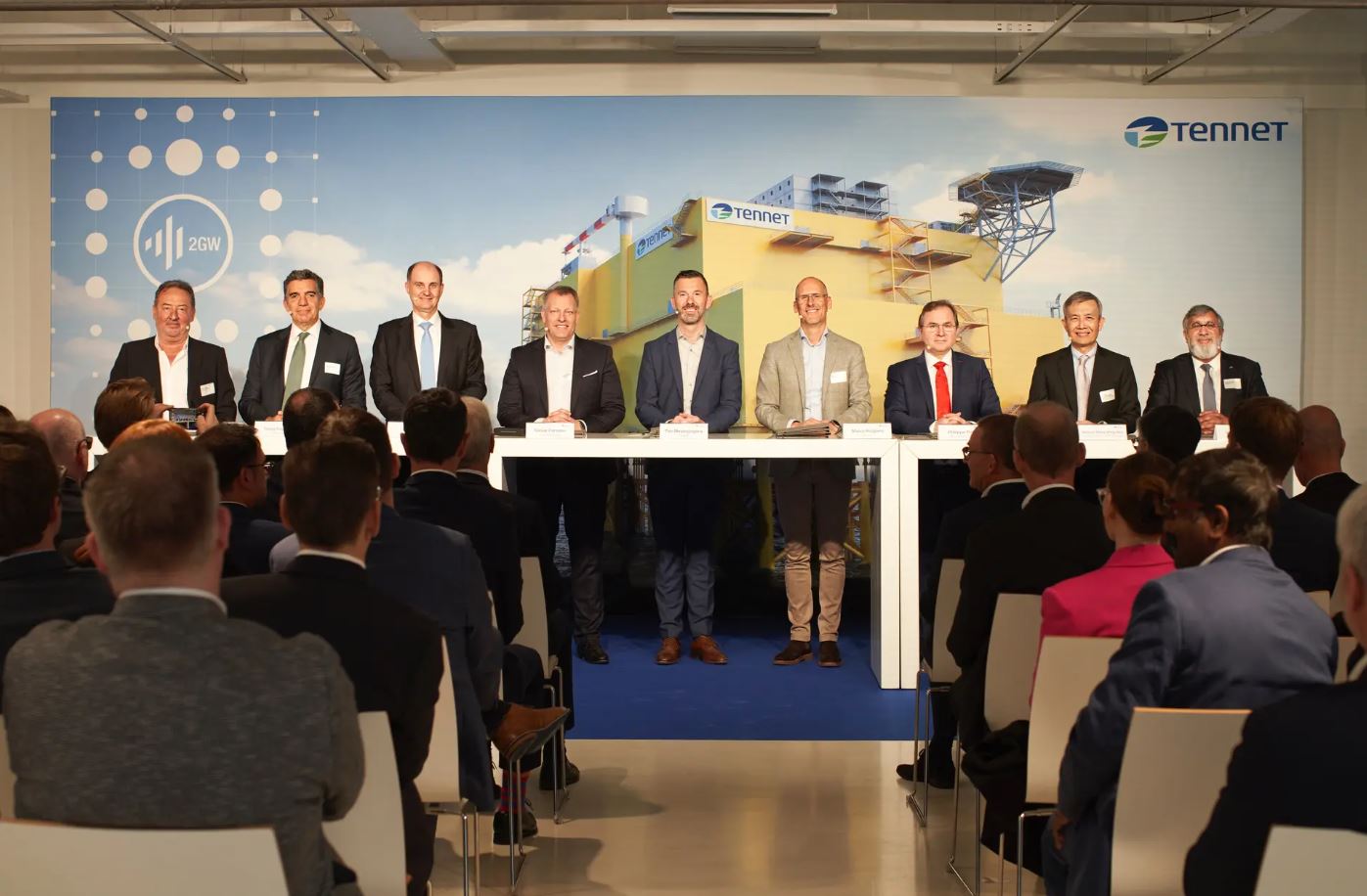Germany – The largest-ever tender award for energy transition infrastructure in Europe was officially signed in Berlin by top leaders from TenneT, Hitachi Energy/Petrofac, GE/Sembcorp, GE/McDermott, and Siemens Energy/Dragados.
With the aim of producing as much electricity as 28 large-scale power plants in the German and Dutch North Sea, the total value of the contracts for the parts of 14 offshore grid connection systems comes to almost €30 billion.
The process of awarding contracts for sea- and land-based converter stations for a total of 14 offshore grid connection systems has been completed by TenneT, the top operator of offshore transmission systems in the EU. All projects will only use “core components” produced in the consortium members’ European production facilities, which utilize two-gigawatt technology to convert alternating current to direct current and back.
Energy from North Sea
This accomplishment is a huge step in the right direction for Europe’s mission to make the North Sea the continent’s primary source of renewable energy. The project is anticipated to increase the scalability and affordability of green wind energy from the North Sea while lowering environmental impacts. The aggressive schedule for completing these 14 systems by 2031 shows how committed Europe is to setting the standard for technology and production in the energy transition.
For the energy system to actually transform and for the global energy transition to advance, cooperation amongst consortium partners including Hitachi Energy, Petrofac, GE, McDermott, Siemens Energy, Dragados, and Sembcorp Marine is essential. Innovative business models built on agile cooperation, standardization, and project synergies are made possible by these collaborations, which are essential to this transition. High-voltage direct current (HVDC) technology, which was invented and refined through time, is also anticipated to play a significant role in enhancing the energy security of Europe, lowering emissions, and hastening the integration of renewable energy sources into power grids.
Sustainability
Although this project marks a crucial turning point in Europe’s energy transition, there may be issues that need to be resolved. Grid expansion must keep up with the renewable energy sector’s fast expansion ambitions, and policy-level interventions may be necessary to simplify the permitting process, guarantee access to raw materials and trained labor, and promote the sector’s further expansion. Notwithstanding these obstacles, signing the contracts for Europe’s largest-ever offshore wind energy infrastructure tender award represents a huge step forward in the continent’s quest for a more sustainable, adaptable, and secure energy system.
In conclusion, the contracts being signed in Berlin for the largest-ever offshore wind energy infrastructure tender award in Europe mark a significant turning point in the continent’s energy transformation. By 2031, the ambitious project hopes to produce in the German and Dutch North Sea as much electricity as 28 large-scale power plants, and it will only use European industrial facilities to make its essential parts. Collaboration among consortium members, the use of creative business models, and the deployment of cutting-edge technologies like HVDC are anticipated to speed the global energy transition and bring about genuine change in the energy system. However, to ensure the successful completion of this project and the future growth of renewable energies in Europe, issues like grid extension, policy-level interventions, and streamlining of permitting processes may need to be addressed.





